How to organise a hallway and banish the clutter for good
Get ready to open the door to a calm and clear hall...

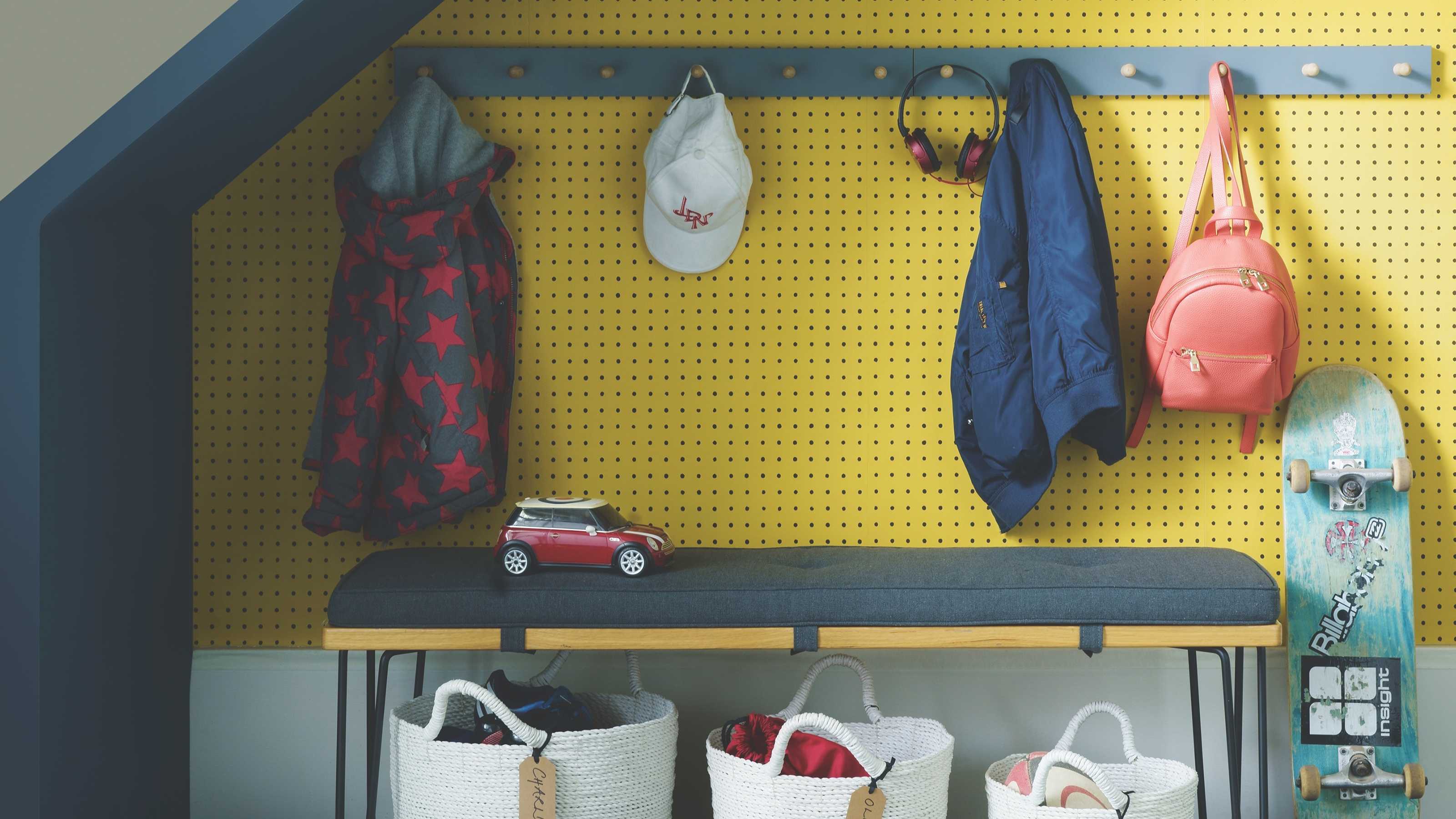
Being the first room you set eyes on as you walk through the door, there's nothing worse than being greeted by a cluttered hallway. But with work and life taking over, it's easy to get stuck in the trap of leaving everything where you need it.
Getting started with decluttering isn't as difficult as it may seem and there are plenty of hallway storage ideas to make staying organised easier. 'A common problem with the hallway is that it becomes the space where you store all the odds and ends you otherwise don’t know what to do with,' explains Vicky Silverthorn, professional declutterer and brand ambassador at Vintage Cash Cow.
'After years of tossing endless bits and bobs inside, you might have ended up with a cluttered space that does nothing but stress you out. With this in mind, starting with a heavy-duty decluttering session is vital for an organised hallway. Not only will it do wonders for the finished look and feel of your hallway, but it’ll help to clear your mind and decrease your day-to-day stress levels.'
How to organise a hallway
If you're not sure where to start, we've got some top tips on how to organise a hallway, to make decluttering that little bit easier.
1. Take everything out of your hallway
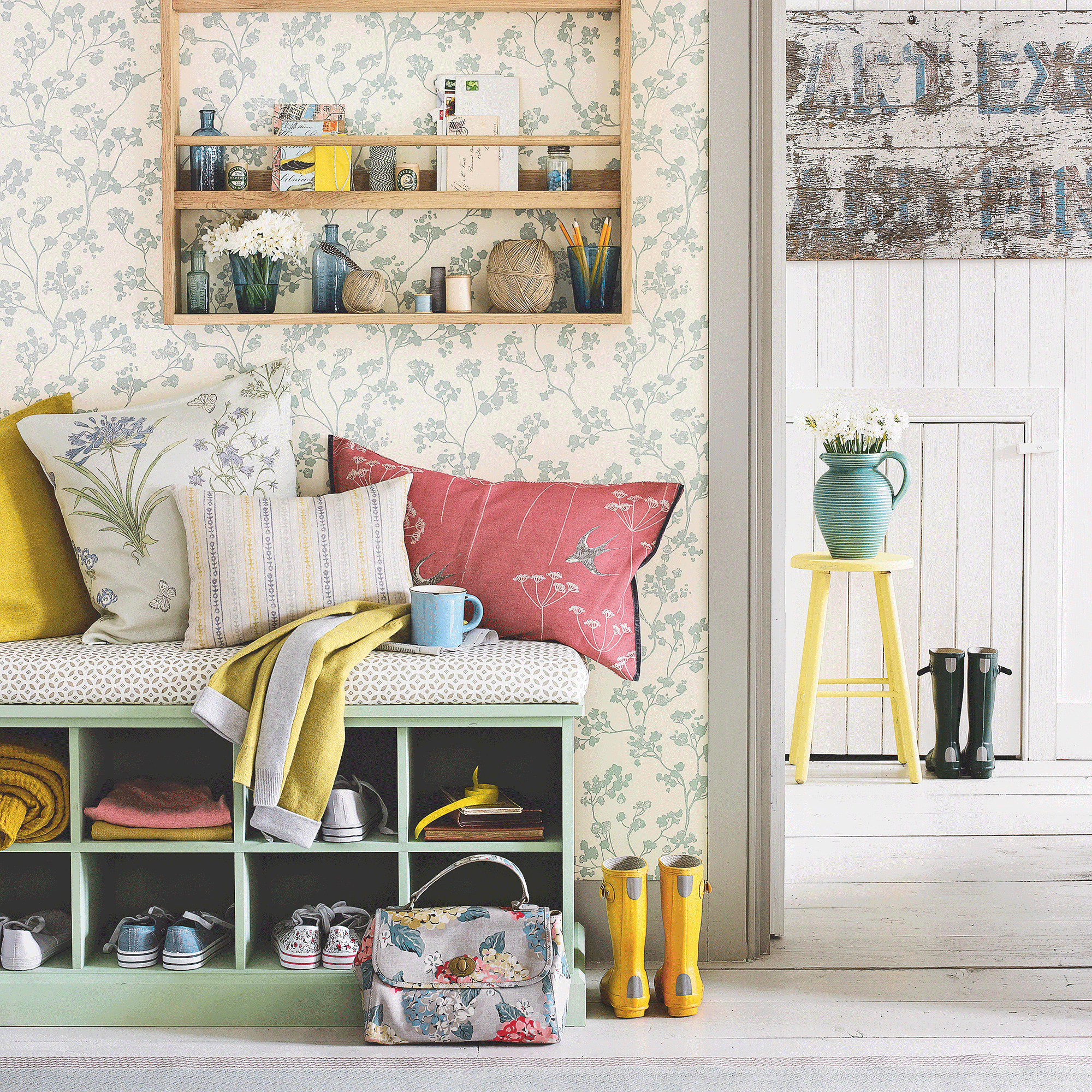
The best way to begin organisation and storage projects is with a clear space. 'Start by taking everything out of your hallway – yes, everything,' advises Vicky.
'This will help you objectively see everything you’ve got in there, while allowing you to give the space a thorough clean You can then get started on deciding what to store in your hallway.
2. Decide what stays and what goes
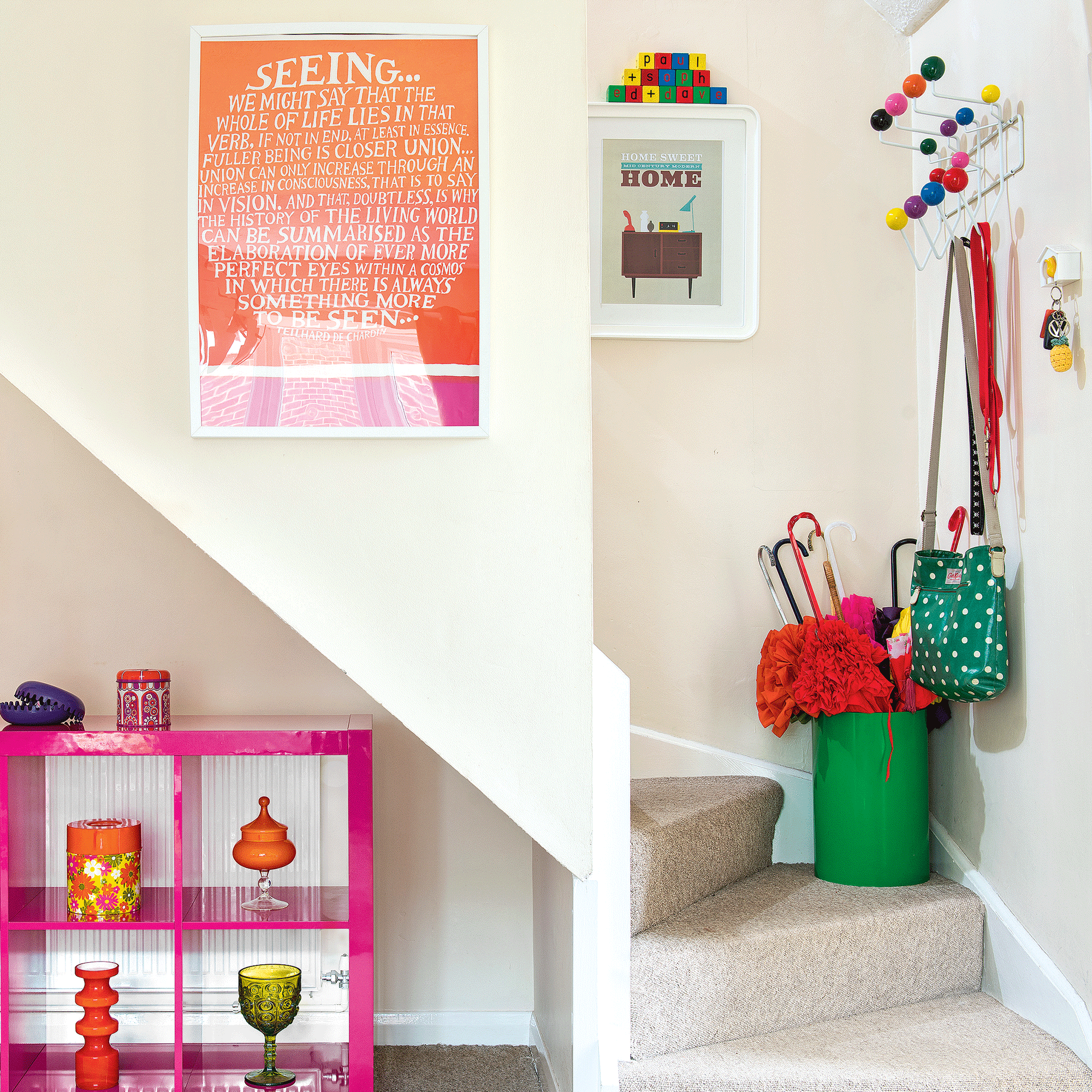
Vicky suggests to sort through everything you had in the hallway. 'One by one, consider each item and ask yourself:
Sign up to our newsletter for style inspiration, real homes, project and garden advice and shopping know-how
- Have I used this in the past 6 months?
- Is this particularly special or sentimental to me?
- Will I, realistically, ever need this again?
'If you’ve answered no to all three questions, it’s time to get rid. As you go through the items, create separate piles or boxes to help to keep things organised. Have one for the items you want to keep in the hallway, one for items that belong elsewhere in the house, and one for items you want to chuck (or, better still, sell, recycle or donate).'
3. Keep seasonal items to hand
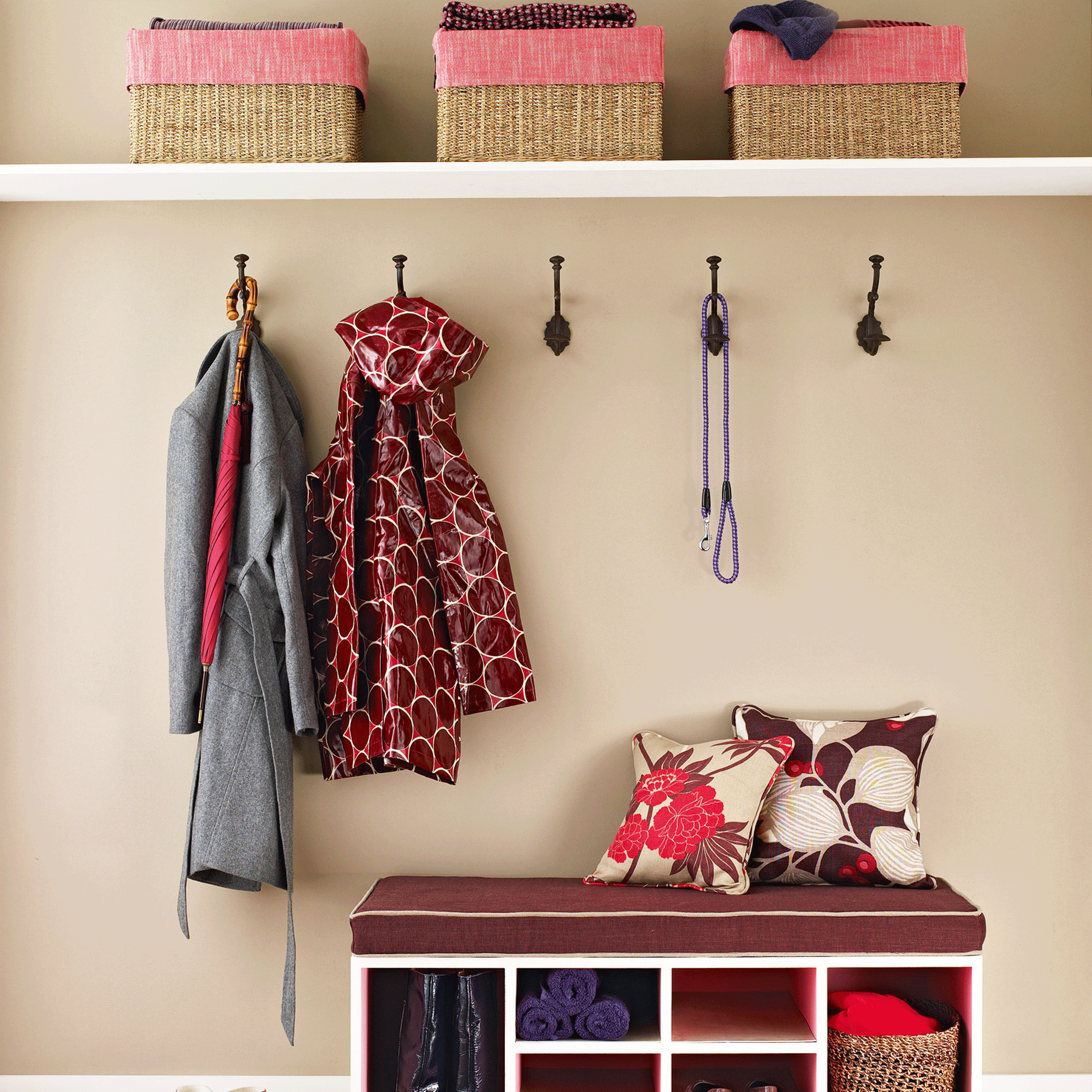
One way to keep narrow hallways clear is to switch things up as the seasons change. 'During the spring and summer, your winter coats and boots can be neatly stored in the attic, rather than cluttering up your hallway,' says Vicky.
'Come winter, your sandals can be swapped with them. This way, the things you need on a daily basis will be easier to access; saving you time and reducing day-to-day stress. But if you’ve got a relatively large hallway space to work with, out-of-season items, or items you don’t use daily, can be kept up high on shelves or stored out of sight in boxes.'
4. Keep it simple
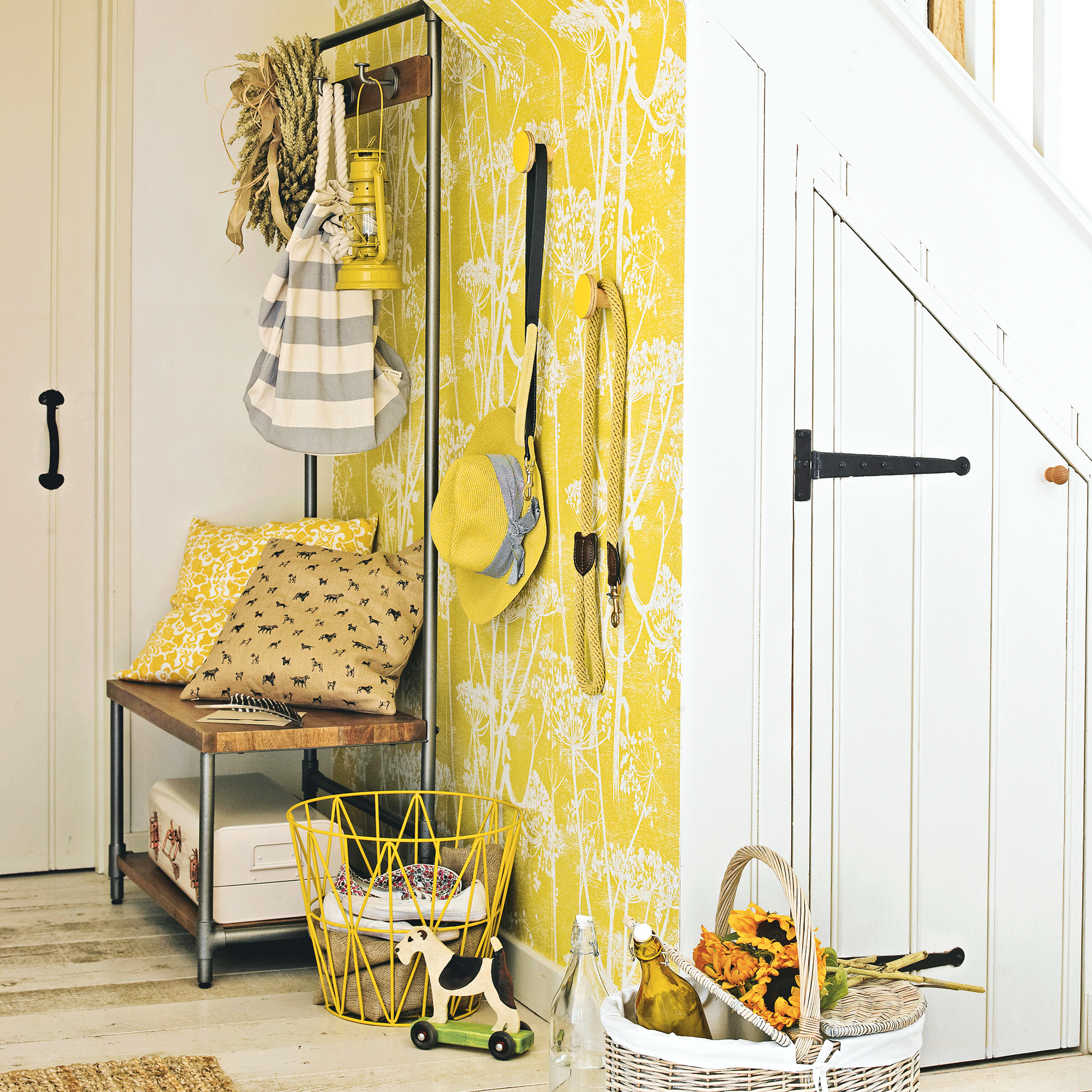
Making sure essential items have a dedicated space is key to keeping your hallway clear. This will also help to make a narrow hallway look wider, so it's a win-win.
'Only keep what you need to pick up or put on when coming in or going out, using a landing station for your keys, wallet and umbrella and always leaving them in the same place when you enter your home,' advises psychologist and professional organiser Helen Sanderson.
'If something is on its way out of the house, skip the hallway and put it straight into the car boot, and incoming mail is better in an office space or in-tray elsewhere in the home.'
5. Start as you mean to go on
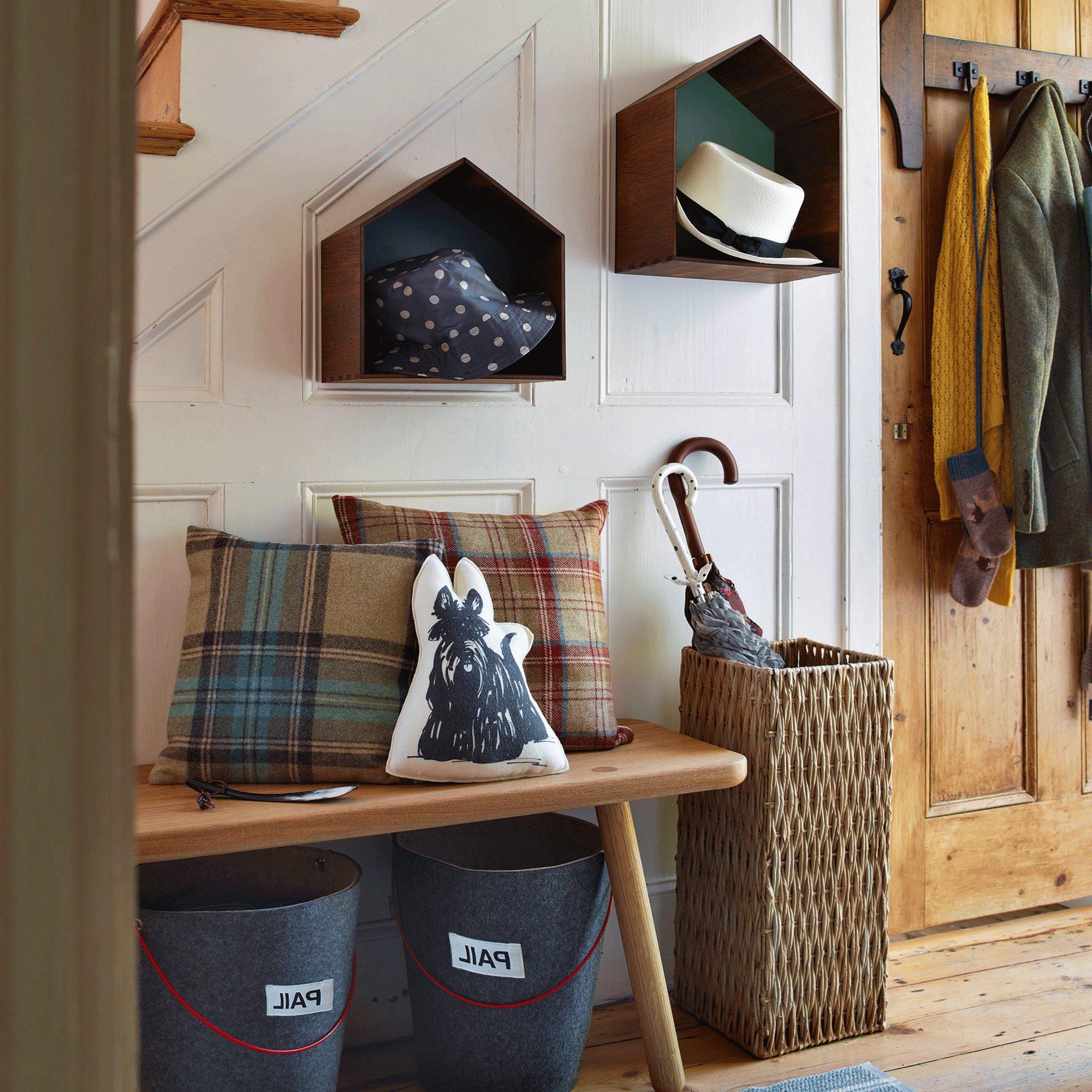
Once you've got everything organised how you want it, it's worth putting in the effort to keep on top of things and adding hallway organisation into your cleaning calendar.
'Just like a garden, after the weeding and planting you need to maintain it or the weeds grow back and the plants get overgrown, this means scheduling regular mini declutters into your diary and committing to doing them,' explains Helen.
'You also need to build good habits, setting yourself and the family some agreed "house rules" is a great start: e.g. Always put things away into the dedicated storage or open the incoming mail every day.'
6. Store daily essentials
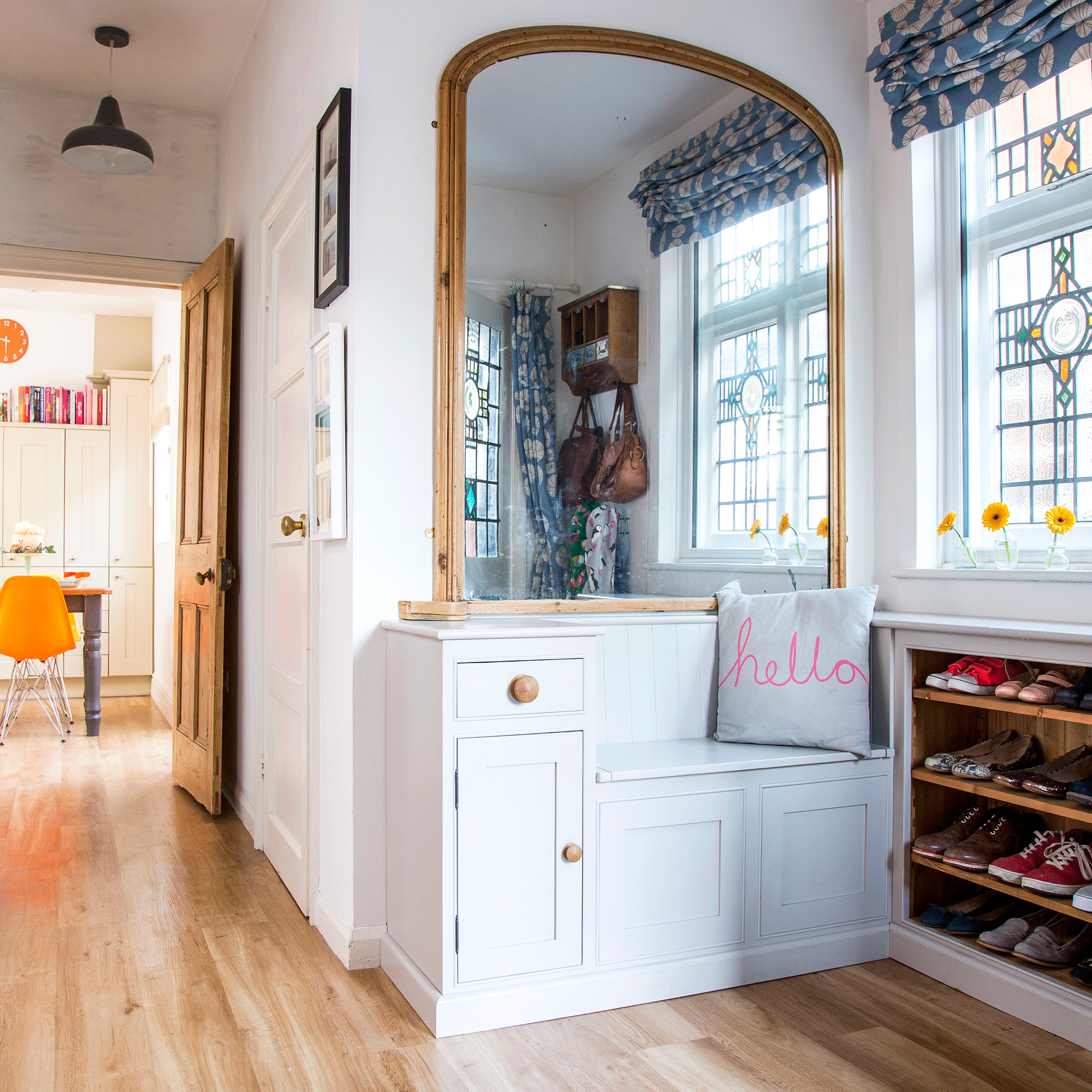
Small hallway ideas can help make the most of limited space. 'If your hallway space is limited, or the entire area feels cluttered, ask yourself this: do all of these items really need to be here?' advises Vicky.
'For example, think about your shoe collection. It makes sense to store your everyday trainers and work shoes in your hallway, but the heels you wear twice a year or the sandals that only come out during heatwaves don’t really need to be there.'
7. Make sure everything has a home
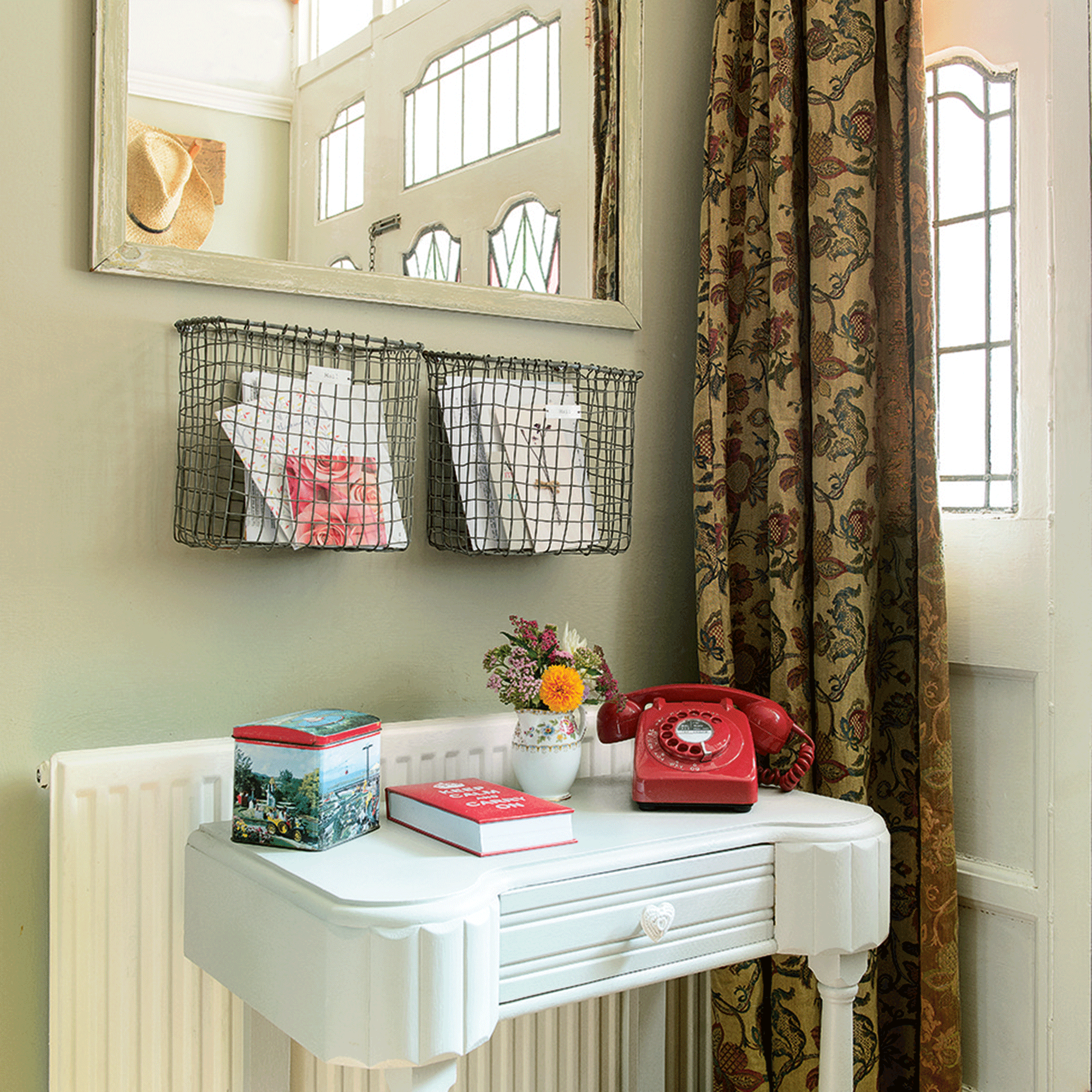
By making sure everything that's stored in the hallway has a dedicated area, like hallway shoe storage, you will make tidying up much quicker and easier. 'Small, loose items (think bags, hats and gloves, as well as keys and post) can cause hallway clutter chaos if you don’t have anywhere specific to put them,' explains Vicky.
'Plus, they’re much more likely to get lost or mismatched. Create a designated area for each category of items. This could be a variety of small, labelled boxes that you keep in your hallway cupboard, a tray or box for keys on your hallway table or sideboard, or a wall-mounted organiser with compartments. This will help you to keep everything in place and quickly find what you need on your way out of the house.'
8. Be clever with storage
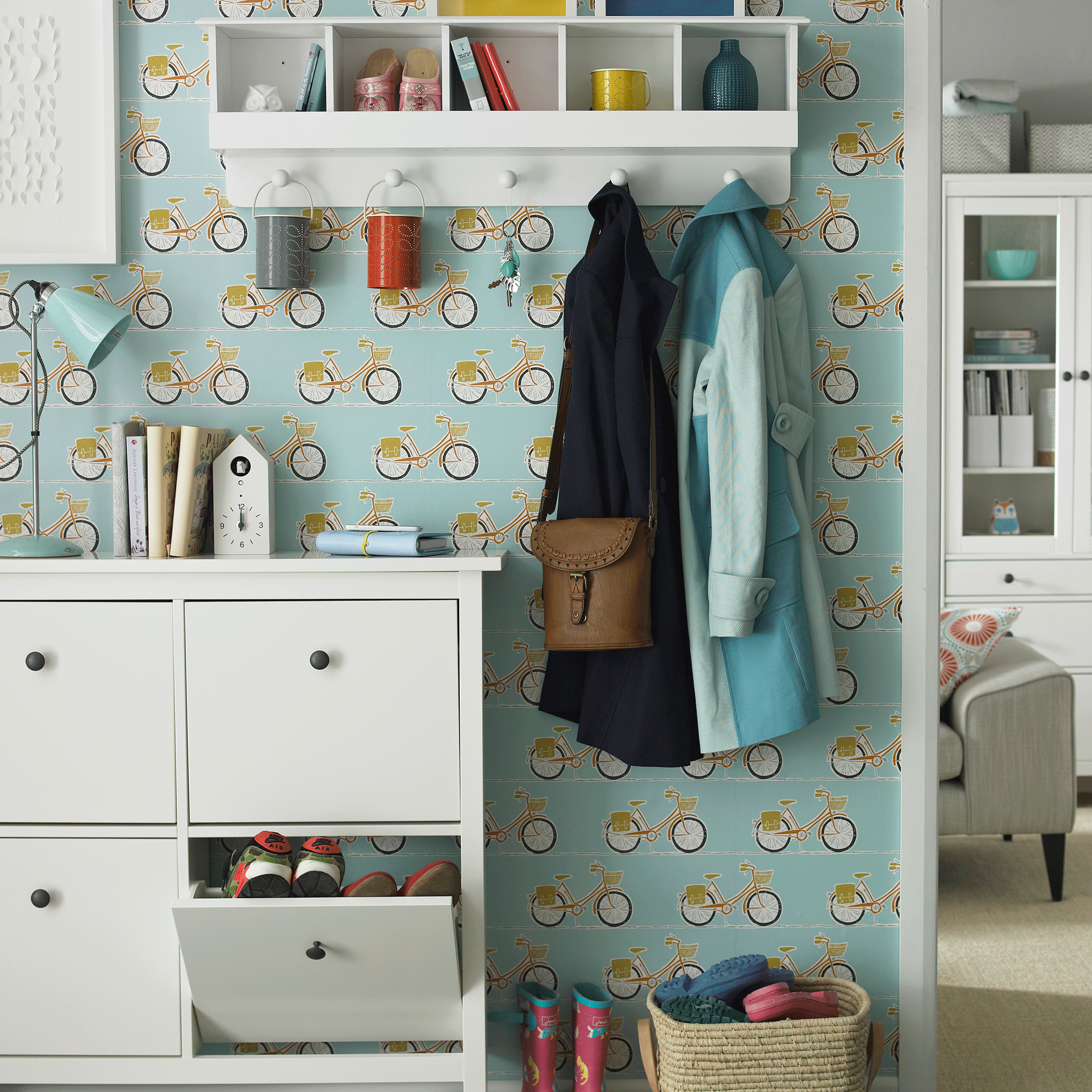
Walls and the backs of doors are great places to create unobtrusive storage areas. 'If you’ve got a small hallway, make use of all the available vertical space,' advises Vicky.
'You could add pegs to the back of doors for coat hanging ideas, for example. Or, you could install some floating shelves and pop a small container for keys, as well as a tray to neatly store your unopened post, on them.'
9. Give everyone a dedicated space
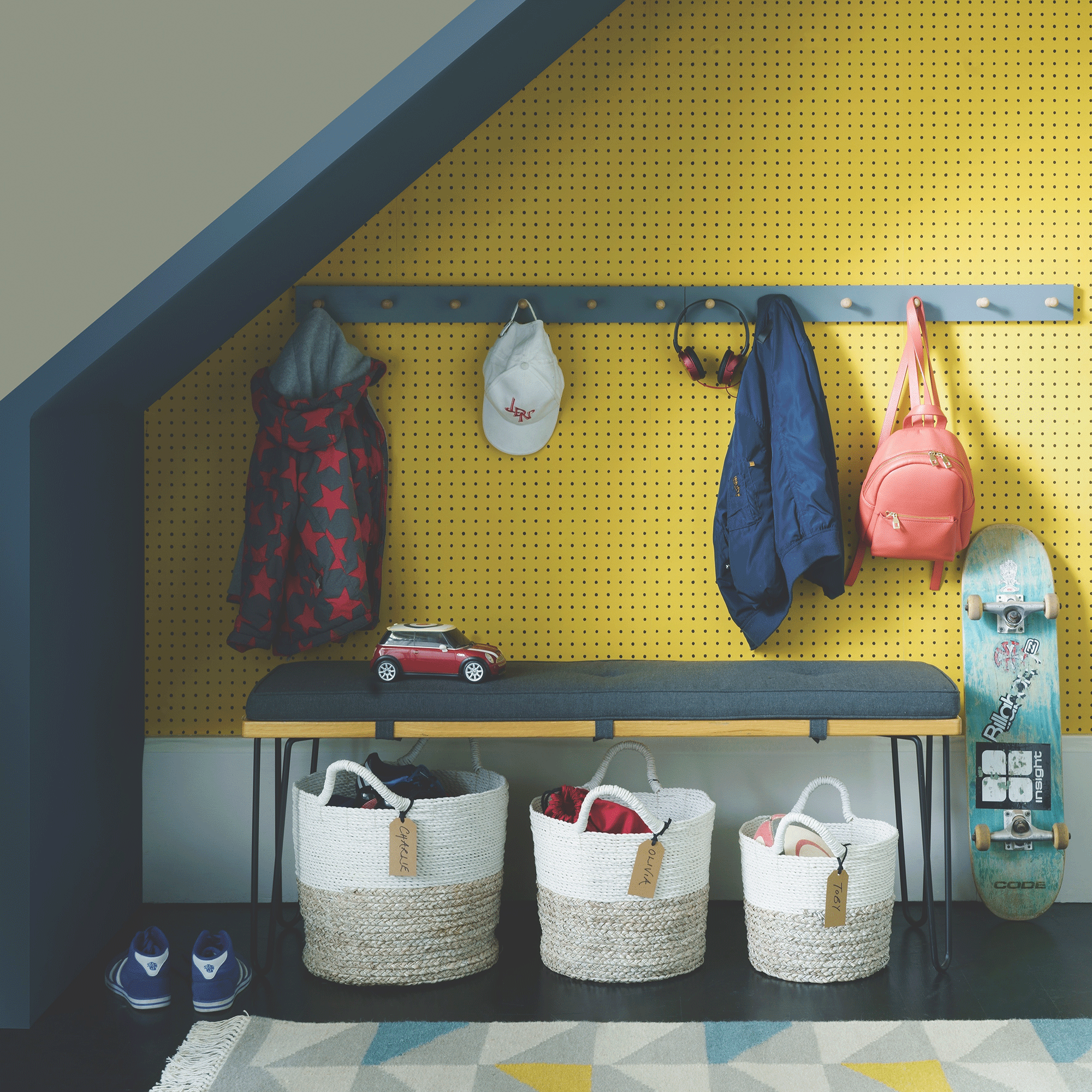
Getting the kids involved with some fun storage ideas can make it easier for them to tidy up after themselves. 'Children love having their own designated place or area to put their things, so why not set up a coat hook for each of them?' says Vicky.
'You could buy personalised ones with their names on – or, even better, get them involved and spend an afternoon helping them to paint or design their own. You could also use cube storage for their school bags, PE kit and school shoes. As well as keeping things organised, it should help to ease school morning stress, too!'
10. Have a five-minute tidy every day
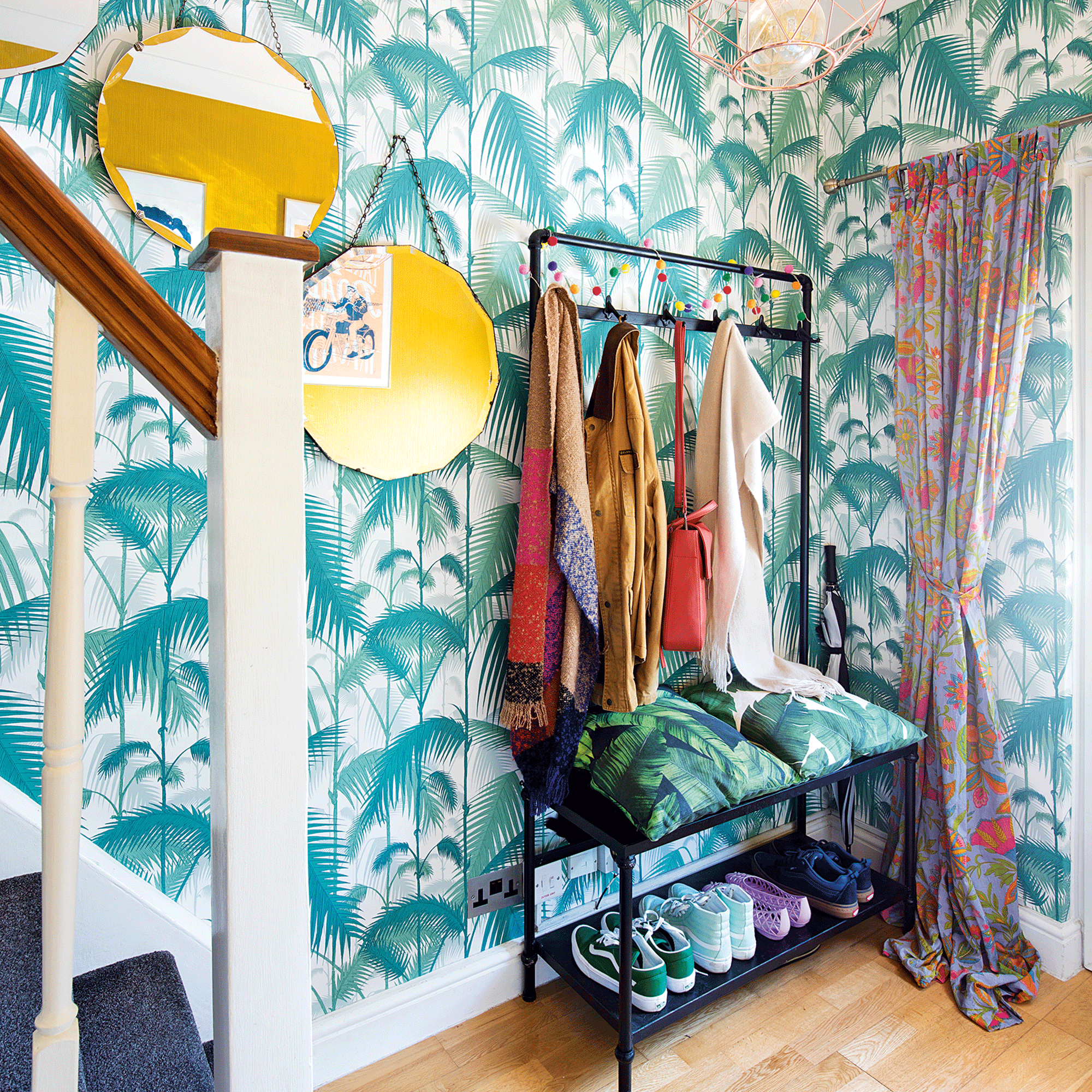
'A cluttered hallway will make homes feel instantly busy when you walk into them and can often encourage more mess to build up, with coats and shoes strewn across the floor or bottom of the stairs,' explain TV's Style Sisters Charlotte Reddington and Gemma Lily.
'A 5-minute sort of the space on a daily basis – from sorting through the post that's come that day and recycling letters, to putting shoes and coats away – will keep it looking clear of general clutter and save you dealing with a bigger build up if left until the end of the week.'
FAQ
How do you organise a small hallway?
'Regularly, thoroughly and diligently: remember that small hallways are primarily transitional spaces, so keep as few things in there as possible to keep the flow in and out of the home clear,' advises professional organiser Helen.
'Think carefully about anything that can possibly go somewhere else and relocate it: what you do have should make use of vertical space, with hooks, shelves and wall-mounted organisers that you declutter regularly.'
How do you declutter a hallway?
'Take everything out and into another room then go through it systematically, weeding out what you no longer need and what belongs elsewhere in the house,' says professional organiser Helen.
'Only when you have completed the ‘weeding’ and got rid of the clutter, should you move on to the ‘planting’ stage: this means deciding mindfully what you want to put back, carefully reviewing your storage, and defining a place for everything.'

Amy Hodge has been working on interiors magazines for over 11 years. She's a freelance writer and sub editor who has worked for some of the UK's leading interiors magazines including Ideal Home, Style at Home and Country Homes & Interiors. She started at Style at Home just after it launched as food editor and is now chief sub editor for Ideal Home, Style at Home and Country Homes & Interiors.